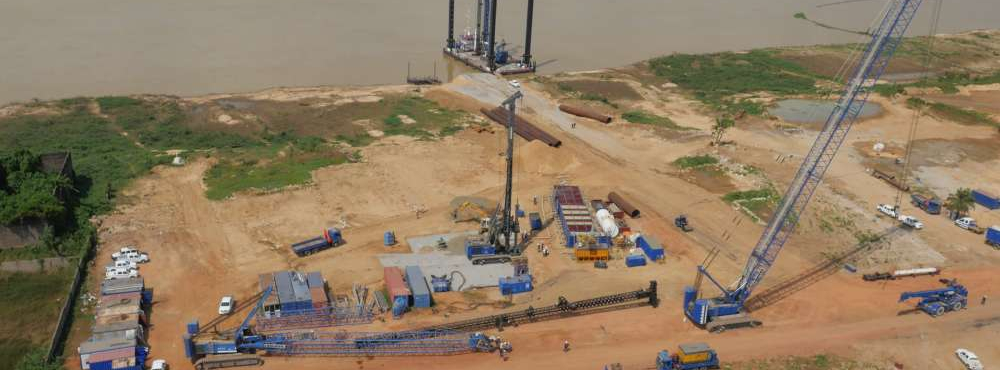
This user has not added any information to their profile yet.
Dipl.-Ing. Christian Schwab started his professional activity after finishing his studies at the University of Karlsruhe, Germany, as a graduated civil engineer, specialised in soil mechanics and rock mechanics, in 1999.
After 15 years of extensive experience in the construction industry at Bilfinger Construction GmbH (8 years) and at Zueblin AG (7 years) as a geotechnical engineer, geotechnical design manager and assistant head of a geotechnical design team, Dipl.-Ing. Christian Schwab founded his own engineering office Geolink Geotechnics in 2014. At the same time Mr. Schwab was appointed as an interim professor for geotechnics at the University of Applied Sciences in Mainz, Germany.
Additionally, Christian acts as a representative in Germany, Austria and Switzerland for the software companies Geo-Slope Inc. from Canada and the UK-based company LimitState Inc.
Geolink Geotechnics considers itself as an engineering service provider focused on challenging geotechnical tasks from various fields of the construction sector. Christian has many years of experience in geotechnical consulting and design all over the world in differing soil and rock conditions. Partners of the company are Prof. Dr.-Ing. Katharina Kluge, Doc. RNDr. David Mašín, M.Phil., PhD., Prof. Dr.-Ing. Sascha Richter and Prof. Dr.-Ing. Florian Unold. Additional specialists may be integrated in the project team if required.
Especially in the case of complex boundary conditions (crossing underground structures, deep excavations, sensitive buildings, etc.) precise FEM-analyses can contribute to ensure a safe design and to show the client the own geotechnical understanding. Nevertheless, a profound understanding of combined geotechnics and structural design is required to evaluate the needed amount of a subsoil investigation campaign, laboratory tests, to identify relevant construction sequences and to assess the results of numerical analyses.
Major projects using advanced hypoplastic constitutive equations in real construction projects are:
- Kasernenstraße, Duesseldorf (2017): Task: Calculation of tower-settlements induced by the excavation of a construction pit by means of hypoplastic constitutive equations. Proposal of laboratory test program.
- Cable-stayed bridge in Africa (2016): Large infrastructure project in Africa including a cable-stayed bridge with a length of approx. 1,590 m and 22 foundation axes. Construction of the bridge by incremental launching, balanced cantilever construction and classical shoring system. Task: Calculation of specific group reduction factors of foundation axis founded on bored piles by means of hypoplastic constitutive equations. Method presented in German EA-Piles is based on simplified numerical calculations and leads to very high group reduction factors. Planned pile diameter and embedded length are outside the validity limits of the method proposed in EA-Piles. Validation of numerical models by back-calculation of a pile test (Osterberg-method).
- Azura Edo Power Plant (2015-2016): 495 MW open cycle gas turbine power plant founded on bored piles in lateritic soils. Dynamic loading due to unbalanced forces. Task: Calculation of foundation spring stiffness by means of hypoplastic constitutive equations during static and dynamic loading, evaluation of pile test, geotechnical consultancy.
- R&D-project High-rise buildings in Lagos, Nigeria (2012-2014). High-rise buildings in variable subsoil conditions founded on bored piles. Sealing of the construction pits by means of secant pile walls and grouting slabs. Task: Evaluation of subsoil information and pile test results. Calibration of parameters. Numerical calculations of combined-piled-raft foundation by means of hypoplastic constitutive equations. Optimization of pile foundations in Lagos.
- Shiplift Niederfinow, Germany (2012-2014). Construction of a new shiplift with a footprint of approx. 6,000 m². Depth of the construction pit approx. 15 m. Sealing concept by means of sheet pile wall and an anchored underwater concrete slab. Height of the pylons and columns approx. 55 m. Very small tolerable tolerances during the construction of the pylons. Task: Checking of soil model. Finite Element calculations of deformations of the structure during construction by means of hypoplastic constitutive equations, geotechnical consultancy of construction site, design of soil improvement by means of grouting to stabilize a temporary bridge foundation.
- Power Plant Mannheim (2012), Germany. In the course of the construction of the new unit (Block 9) of the power plant Mannheim the construction of a microtunnel was required. Since the tunnel runs along very sensitive and important structures (silos, pipes, facilities) soil improvement measures by means of jet grouting was planned to deal with the settlements induced by the tunnelling. Task: Design of jet grouting measures to prevent settlements due to tunneling by means of hypoplastic constitutive equations. Evaluation of monitoring data.
- North-South Metro, Cologne, Germany (2009-2012): Failure of the Waidmarkt excavation. Finite Element calculations of deformations of the structure during construction and failure by means of hypoplastic constitutive equations.
- Umeälv Bridges, Botniabanan, Sweden (2008): Design of bridge foundations and temporary works by means of hypoplastic constitutive equations, geotechnical consultancy of construction site.


